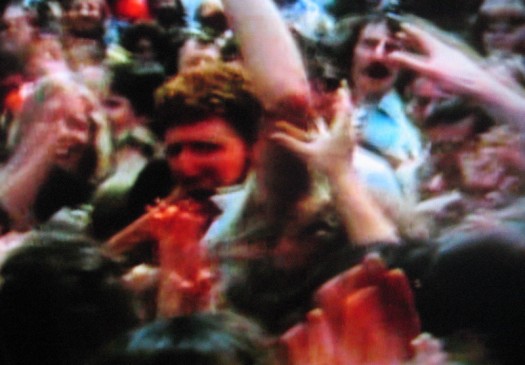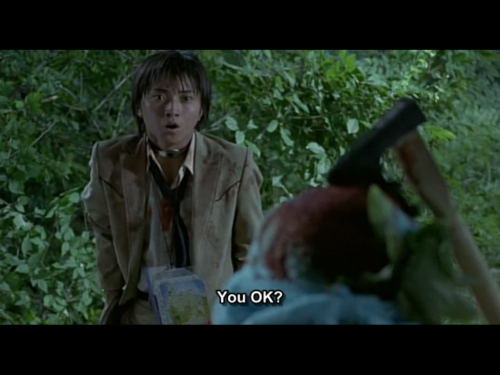
If you're 35-ish and you've followed basketball, you probably recall the virtues of the pre-David Stern NBA, the simpler times when corporate logos were incidental, local heroes more accessible, and the entire sport more truly fan-friendly. Stern always talks about fan-friendliness, but his NBA is a Product and the "friendliness" seems as produced as two-for-one chalupa night. Back in the day, a young Kansas City Kings fan could attend Kings practices at a local high school (for free), and afterward mingle with players like Ernie Grunfeld, Phil Ford, and Otis Birdsong. It goes without saying that most fans would take that over a free chalupa any night. Red Hot and Rollin recaptures the simplicity and beauty of those times. Edited by Matt Love, it compiles a variety of recollections of the Rip-City-era Portland Trailblazers, and includes a DVD of a truly amazing document of the time — Don Zavin's Fast Break. Zavin's film is astounding in many regards. Primarily, it's a bittersweet meditation on a lost NBA — the League before each player became a corporation unto himself, and before the entire visual experience of watching an NBA became NASCAR-ized with layer upon layer of corporate logos. Moreover, it's possible that there is no team in the history of the NBA that is as antithetical to Stern's NBA than the Blazers of 1976–77: a small market team without a marketable superstar, led by a vegetarian, Marxist, long-haired, Abe-Lincoln-beard-wearing center who stuttered when he was nervous. The form of the film could be called "stoner verite." With a soundtrack that is basically an extended tabla jam, it's a documentary in the tradition of, say, Endless Summer with the crucial difference is that it's unburdened by Endless Summer's linear narrative and omniscient narration. I won't give it all away, but it wanders through some amazingly intimate glimpses into the Blazers' ecstatic run to the NBA title, for instance …
 This is former Blazers star Bill Walton on a classic Falcon racer. After the Blazers won the NBA championship, Walton took a bike trip up the Oregon coast, and scenes from this trip are interspersed throughout the movie. Again, could anyone imagine ANY current NBA star going on a bike trip alone during the off-season? Where are the entourages and Escalades and hotties? It's also sort of amazing to see an NBA superstar engaging in an activity that non-superstars find enjoyable. Where are the strip clubs and casinos, the handguns and hot tubs? (You can't really see in this photo, but the bike's color is Falcon's tell-tale powder blue. Awesome.)
This is former Blazers star Bill Walton on a classic Falcon racer. After the Blazers won the NBA championship, Walton took a bike trip up the Oregon coast, and scenes from this trip are interspersed throughout the movie. Again, could anyone imagine ANY current NBA star going on a bike trip alone during the off-season? Where are the entourages and Escalades and hotties? It's also sort of amazing to see an NBA superstar engaging in an activity that non-superstars find enjoyable. Where are the strip clubs and casinos, the handguns and hot tubs? (You can't really see in this photo, but the bike's color is Falcon's tell-tale powder blue. Awesome.)
 Yes, this is Dr. Jack Ramsay, and yes, his pants appear to be some kind of psychedelic red-white-and-blue crazy quilt. Look out, Larry Brown.
Yes, this is Dr. Jack Ramsay, and yes, his pants appear to be some kind of psychedelic red-white-and-blue crazy quilt. Look out, Larry Brown.
 This is actually the third time in the movie that Bill Walton ended up in a mosh-pit of fans. The fact that this would never, EVER happen today is part of what's so bittersweet about Fast Break.
This is actually the third time in the movie that Bill Walton ended up in a mosh-pit of fans. The fact that this would never, EVER happen today is part of what's so bittersweet about Fast Break.
Some related stuff: A classic Time feature of Walton as a UCLA senior from 1974 called "Basketball's Vegetarian Tiger," a nice review by TrueHoop's Henry Abbott (a Blazer fan) that includes a quick interview with someone who worked on Fast Break, and of course, you've got to see this one: Walton's epic dunk over Kareem in the Western Conference Finals. [YouTube]

 Like Tarantino's movies, the setup is quick and effective.
Like Tarantino's movies, the setup is quick and effective. The humor darkens: A baby-voiced Japanese teen explains the rules of the game, including the fact that the collar worn by contestants goes "boom" under certain circumstances.
The humor darkens: A baby-voiced Japanese teen explains the rules of the game, including the fact that the collar worn by contestants goes "boom" under certain circumstances. Each "player" gets their own weapon. As the plot unfolds, the "players" learn who has what, and figure out how to work with what they have.
Each "player" gets their own weapon. As the plot unfolds, the "players" learn who has what, and figure out how to work with what they have. Finally, there are liberal amounts of blood, and much killing. Mixed with the sardonic dialogue, it's easy to see why Tarantino loves it so much.
Finally, there are liberal amounts of blood, and much killing. Mixed with the sardonic dialogue, it's easy to see why Tarantino loves it so much.



 Choe worked
Choe worked  Typography suits the subject. ALI. Yeah.
Typography suits the subject. ALI. Yeah. Klein is known for his still photography, and he brings a photographer's eye, and a cavalier attitude toward editing. The movie is a montage of spontaneity and action, tracing Ali's path from the build-up to
Klein is known for his still photography, and he brings a photographer's eye, and a cavalier attitude toward editing. The movie is a montage of spontaneity and action, tracing Ali's path from the build-up to  Klein catches a nice glimpse of
Klein catches a nice glimpse of 
 Klein captures some amazing moments around the Rumble, which took place in Zaire, 1974.
Klein captures some amazing moments around the Rumble, which took place in Zaire, 1974. The whole nation appears to be in and around the stadium.
The whole nation appears to be in and around the stadium. 



 A moment from a beautiful, riveting scene in
A moment from a beautiful, riveting scene in  No dialogue. Dog mask. Chain link fence.
No dialogue. Dog mask. Chain link fence.